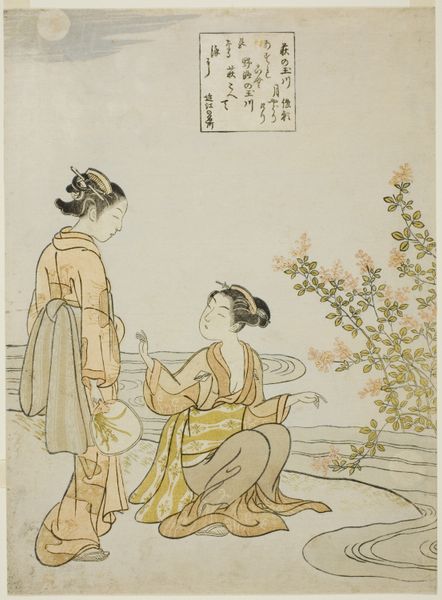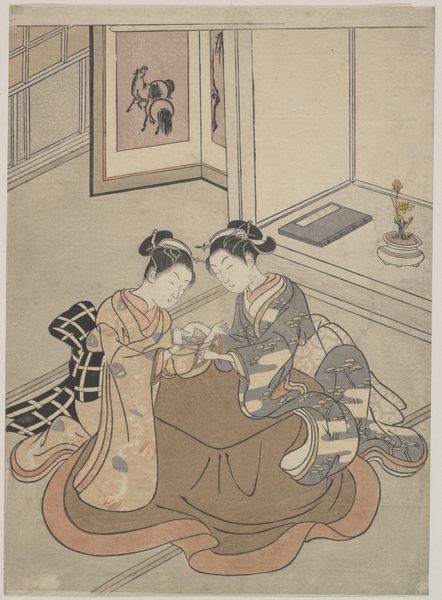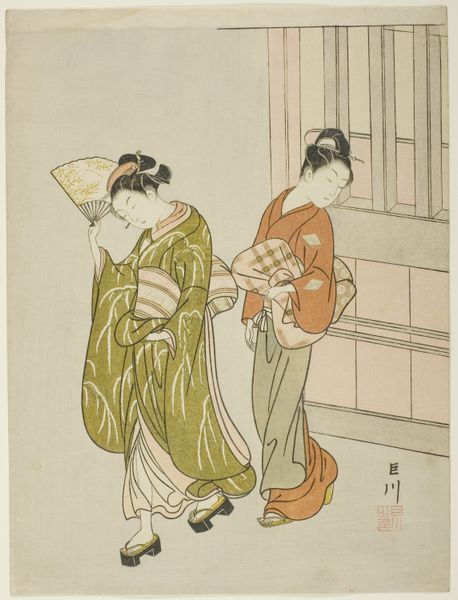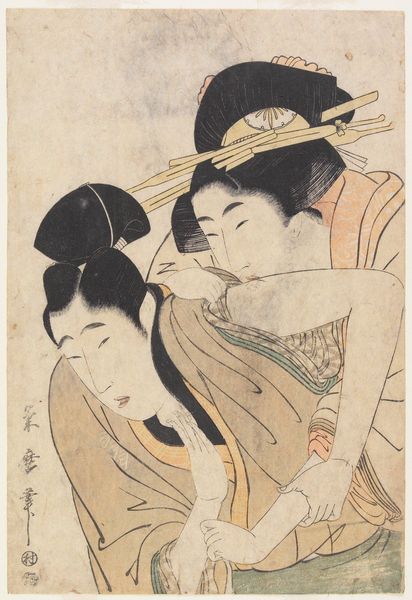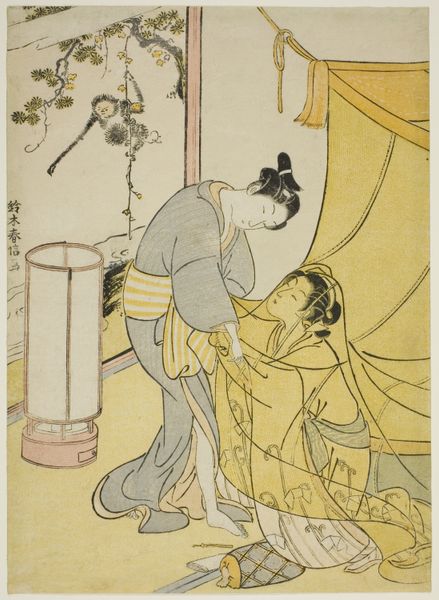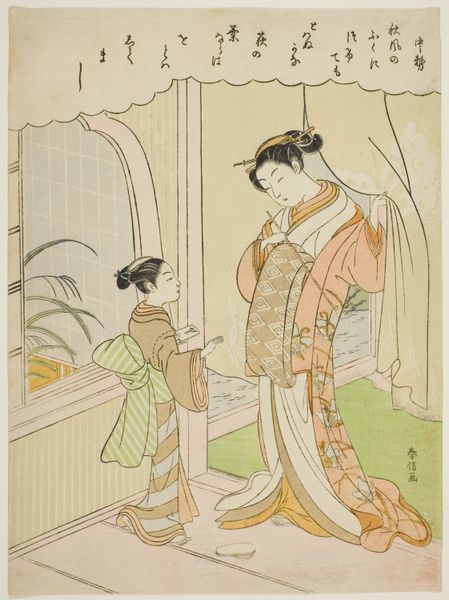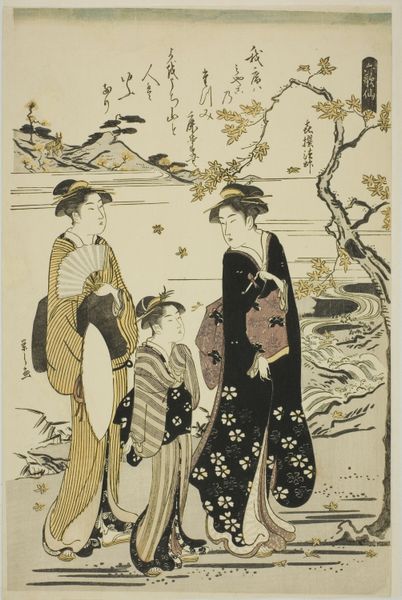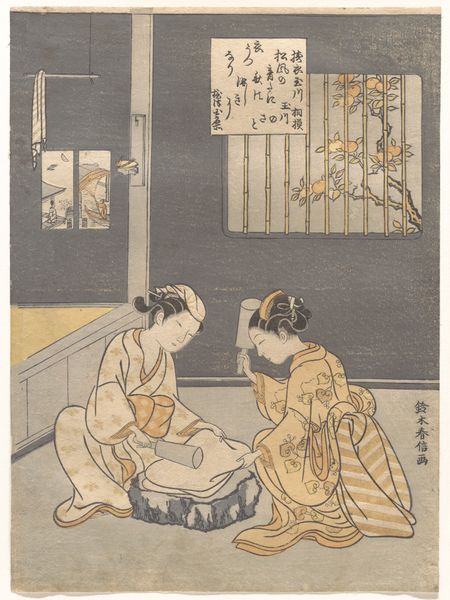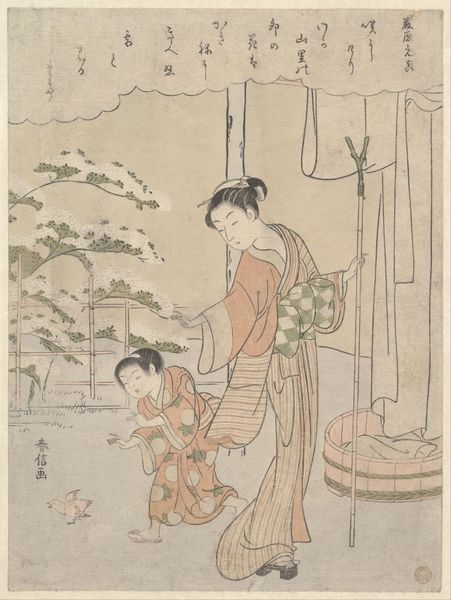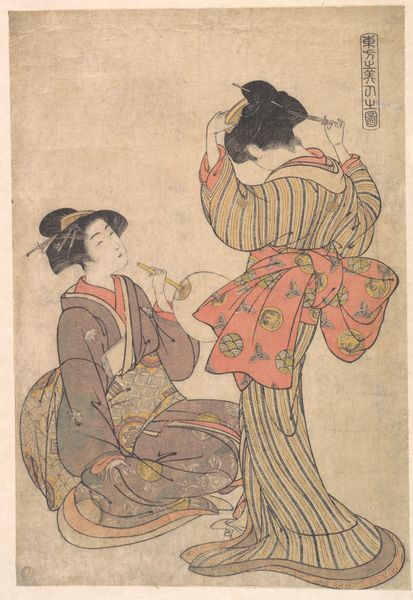
Visual Parody of Emperor Xuanzong and Yang Guifei 1765
0:00
0:00
print, ink, color-on-paper, woodblock-print
#
portrait
# print
#
asian-art
#
ukiyo-e
#
japan
#
figuration
#
historical fashion
#
ink
#
color-on-paper
#
woodblock-print
#
genre-painting
Dimensions: 9 15/16 × 7 5/16 in. (25.2 × 18.5 cm) (image, sheet, vertical chūban)
Copyright: Public Domain
Editor: This woodblock print, "Visual Parody of Emperor Xuanzong and Yang Guifei" created around 1765 by Suzuki Harunobu, intrigues me. I find the muted colors surprisingly striking. What immediately draws your attention in this composition? Curator: Initially, I observe the structural arrangement of the figures, set against the stark ground and patterned screen. Consider the artist's precise orchestration of line and form. Notice how Harunobu manipulates spatial relationships to achieve a flattened picture plane. This conscious emphasis shifts attention towards surface design. Editor: So you're focusing on the shapes and lines instead of what it depicts? Curator: Precisely. The subject matter is of secondary concern. Observe the compositional interplay between the figures' robes and the bamboo patterns which contributes significantly to the aesthetic dynamism. The print exemplifies sophisticated mastery of color. Note how the hues resonate without overwhelming. How does that colour choice contribute to the aesthetic experience? Editor: I guess the harmonious balance makes the subjects become one with their surrounding environment, blending in instead of popping out. Curator: Yes, the subdued palette enhances this sense of equilibrium and unity. It prompts us to focus less on narrative, more on the artist's ingenious rendering techniques. Editor: I see it differently now. Focusing on the interplay of form and colour, shifts my focus away from cultural interpretation. I appreciate your Formalist approach. Curator: Indeed. It allows us to decode art using only intrinsic visual properties and construction.
Comments
minneapolisinstituteofart almost 2 years ago
⋮
Calender print of the year Meiwa 2 (1765) with the numbers for the long months on the woman's robe. A favorite device among early ukiyo-e artists was to reference a historical event or person in a contemporary setting. Here, the depiction of two young lovers playing a single flute suggests the story of Xuanzong, the sixth emperor of China's Tang dynasty. Among his many consorts was a woman known as Yang Guifei. In addition to her physical beauty, Yang Guifei was a gifted singer, dancer, and musician. In a moment of jealousy, the emperor is said to have banished Yang Guifei when he discovered her playing another man's flute. Unable to endure her absence, however, the emperor eventually recalled her to court. The playful affection between the two lovers is suggested in this print, as well as the harmony implicit in their reconciliation.This print also contains a secret calendar. The manner in which the leaves of bamboo cross on the woman's kimono designate the long and short months of the lunar calendar.
Join the conversation
Join millions of artists and users on Artera today and experience the ultimate creative platform.
